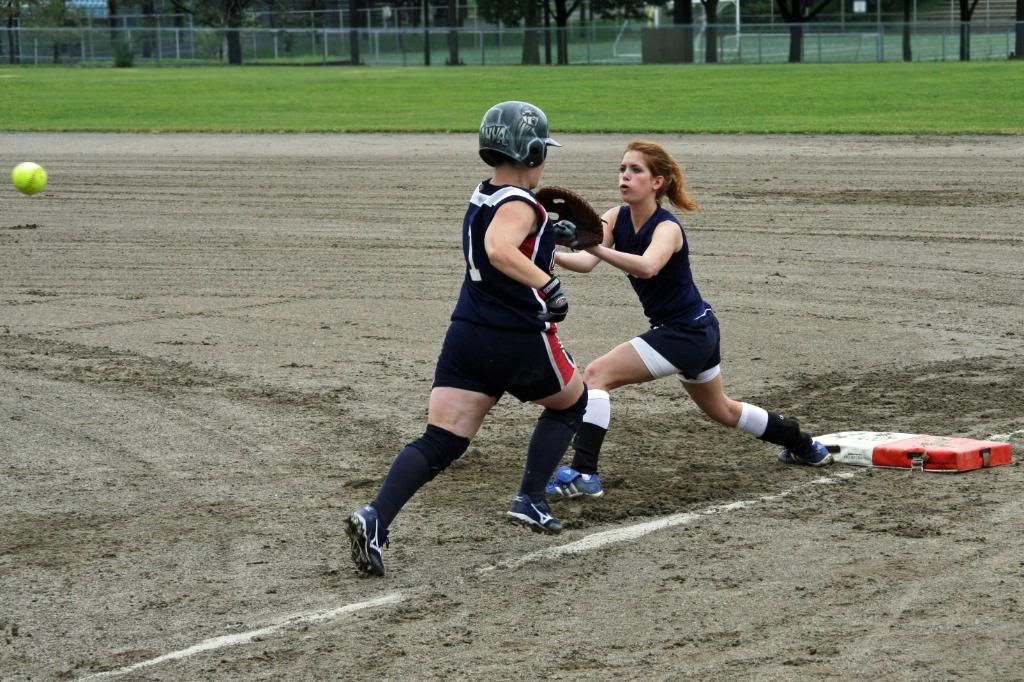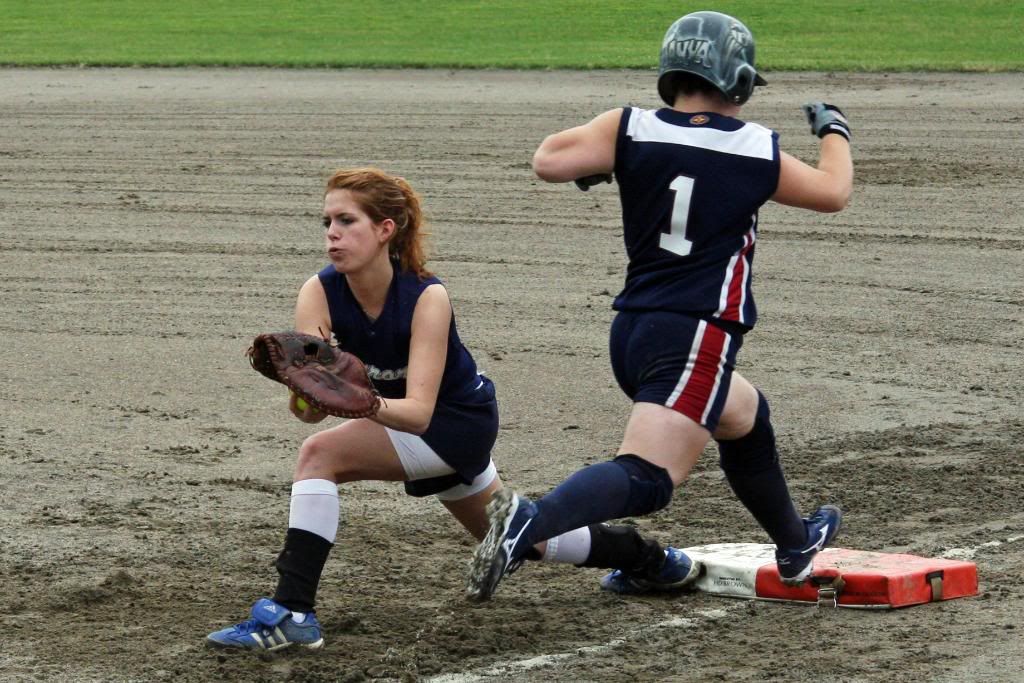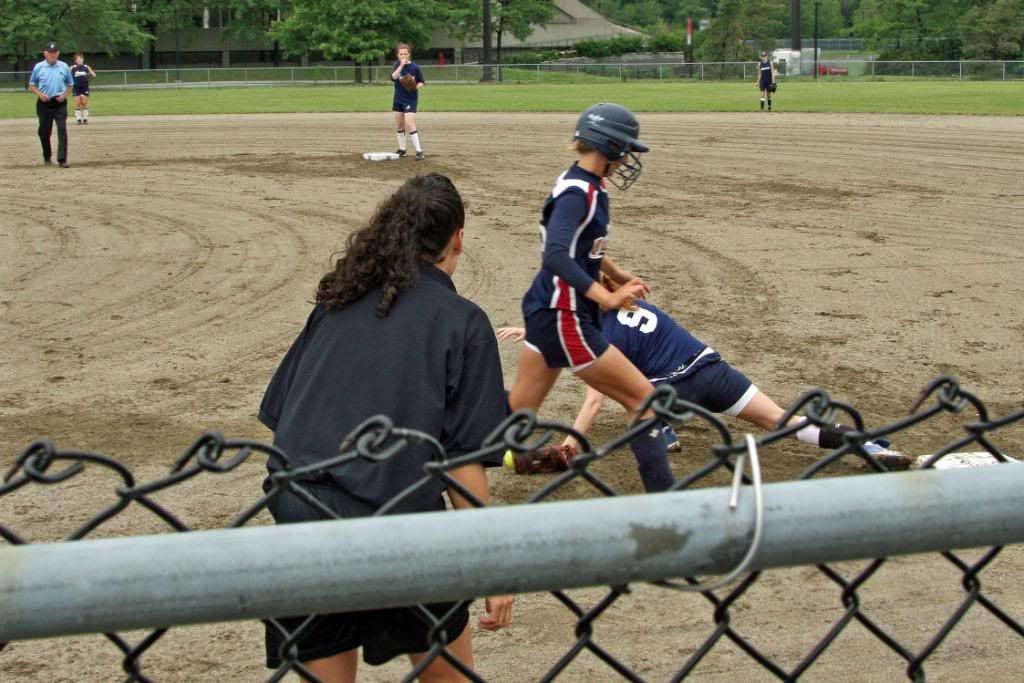NCAA Rule 9.3 Obstruction
Obstruction is the act of a defensive team member that impedes the progress of a runner or batter-runner who is legally running the bases, unless the fielder is in possession of the ball, in the act of fielding a batted ball or about to receive a thrown ball...
Notes:
1. The defensive player must be in the process of catching the ball and not merely positioning, waiting for a throw to arrive.
Notes:
1. The defensive player must be in the process of catching the ball and not merely positioning, waiting for a throw to arrive.








